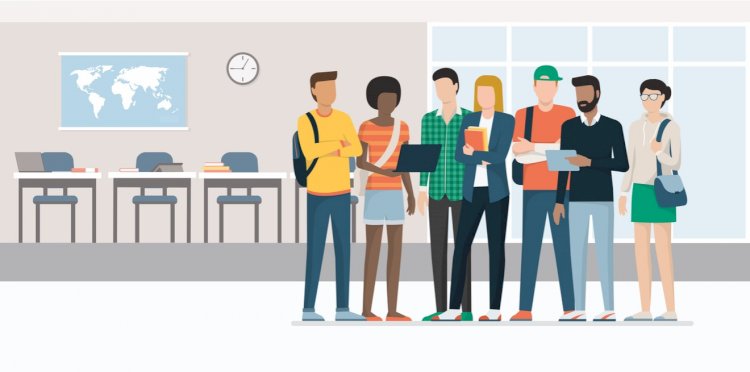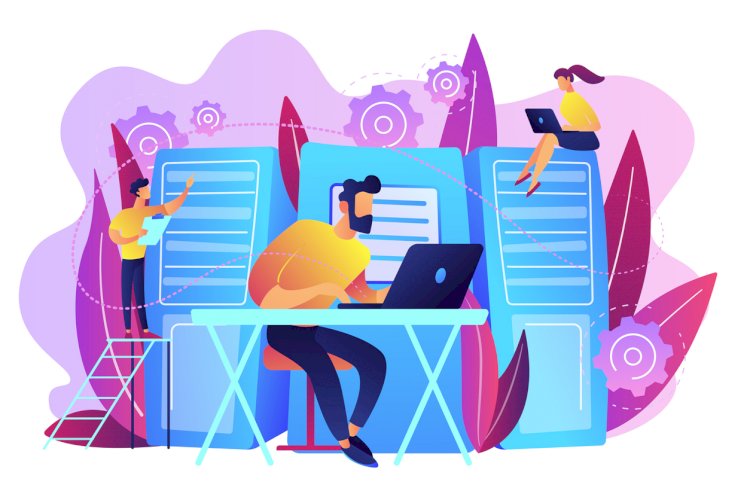6 Ways Universities Are Getting Smarter
Higher education is an ever-evolving industry. From adding new majors to designing dorm rooms of the future, students demand that their institutions be on the cutting-edge. If they’re going to pay tens of thousands of dollars a year to attend, they want all the amenities.

Higher education is an ever-evolving industry.
From adding new majors to designing dorm rooms of the future, students demand that their institutions be on the cutting-edge. If they’re going to pay tens of thousands of dollars a year to attend, they want all the amenities.
Thanks to technology, universities are having an easier time integrating some things students require, making campuses technology leaders and improving student outcomes.
Here are 6 ways universities are using technology to become smarter:
Cloud-Based Tools for Collaboration
 Thanks to apps such as Google Docs, Asana, and Slack, collaboration and organization between teams of students - and even students and instructors - is easier than ever before.
Thanks to apps such as Google Docs, Asana, and Slack, collaboration and organization between teams of students - and even students and instructors - is easier than ever before.
Rather than sending a drafted group project back and forth in email attachments, hoping you’re editing the right version, using web-based collaborative tools has made group projects and revisions easier than ever before.
Professors even use these collaboration tools, listing their syllabi and assignment instructions in apps available anywhere the internet reaches.
Slack, the messaging app, has been used by teams of students to handle group projects, study for tests, or even ask questions of their instructors. The message notifications make it less likely that an email with an important question will get lost in the shuffle.
On an individual basis - or even used to assign parts of projects - task management apps such as Asana and Trello give students powerful organizational tools no matter where on campus they live.
A group project can be planned out to the very smallest step, and dependencies and assignments allow everyone to see what’s due when, who’s responsible, and what still needs to be completed. Attaching documents to tasks means all group members can see portions as they’re completed, so there aren’t any surprises on the day everything gets turned in.
Virtual Reality
Virtual reality isn’t just for video gaming or exploring faraway places.
Many higher education institutions are leveraging virtual reality technology to train their students for situations that are too dangerous, too rare, or too expensive for them to otherwise experience.
Medical and sciences students can explore the muscles, tissues, and organs of the human body without ever touching a cadaver. Oceanography students are able to conduct a species count without ever leaving campus. Archaeology and history students can peek inside the pyramids at Giza.
Whether it’s used for serious training such as over-the-road truck drivers or allowing students to see things they wouldn’t otherwise get to see, such as a reconstruction of a medieval street, virtual reality is giving university students more rich, varied, hands-on educational experiences than ever before.
Videoconferencing
 Videoconferencing is for more than just meetings. It can be used to conduct and record lectures so students don’t miss them, or for online learners. This ability expands the reach of higher education far beyond physical borders, allowing students across the world to access classes at various institutions.
Videoconferencing is for more than just meetings. It can be used to conduct and record lectures so students don’t miss them, or for online learners. This ability expands the reach of higher education far beyond physical borders, allowing students across the world to access classes at various institutions.
Videoconferencing also can be used effectively by students to coordinate and work on group projects or to form study groups.
This fosters connections between students, especially distance learners, who might otherwise have felt disconnected from their institution and classmates.
Ebooks
Expensive textbooks may still be a thing in higher education, but ebooks have made them more affordable and infinitely more portable.
The use of ebooks reduces some of the financial burden on students who already are strapped for cash, and decreases the amount of resources necessary to teach classrooms full of students. Ebooks don’t need all the paper, ink, and glue to produce, and they don’t need to be boxed up and shipped across the country or the world, making them a more sustainable option.
Also, taking notes and looking up additional information when using an ebook is much easier.
Students don’t have to worry about not getting their full buy-back amount because they need to highlight or note important passages; any notes they take disappear as soon as the textbook is returned.
Copying passages into personal note-taking apps to add extra information is easy, too, giving students the option to study the way that will best help them succeed.
Instant Communication
 In an emergency, getting information out to anyone who may be affected is important.
In an emergency, getting information out to anyone who may be affected is important.
Thanks to instant messaging apps, important notices can be sent out to the entire campus community at once. Whether there’s an emergency that requires everyone to shelter in place or that classes are cancelled for weather, instant communication keeps students safer.
Easy access to communicating with school officials, instructors, and fellow students also can help students feel more connected and engaged with their campus community.
If a student needs help with a homework assignment, for example, they can reach out in a Slack channel dedicated to that particular class, email their professor, or ask a question on Blackboard or a similar platform.
This ease of access to information and other people at the college can contribute to better student retention and improved grades.
Adaptive Learning
Adaptive learning uses artificial intelligence and data to determine the success of certain initiatives.
Using data collection and analysis, an instructor could determine which students were struggling with certain concepts and which had mastered them, providing a more tailored educational experience. Rather than simply moving ahead with everyone in a traditional setting, students could choose an adaptive learning environment if necessary.
In these environments, students pursue their education at their own current skill level. This improves retention and student outcomes, as fewer students are left behind by the traditional setting.
While adaptive learning tracks are relatively new in higher education, institutions utilizing a multi-track experience have found success with the model.
Cloud-Based Smart Communities
Smart communities - such as colleges - collect and utilize large amounts of data. With all this data comes the need to effectively store and analyze it, allowing different data to be compared so better decisions can be made. With the smart communities solution Tomo, @Assist provides a cloud-based option to make communities smarter than ever before.

 contact@atassist.com
contact@atassist.com 





